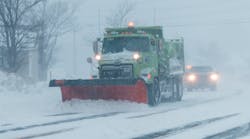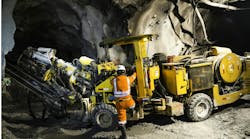Keeping a supply chain running smoothly means ensuring all the relevant vehicles and equipment are ready for the inclement weather winter often brings. One aspect that often gets overlooked is the need to remove snow from tractor-trailer roofs.
However, failing to take care of this step could endanger fleet drivers and everyone else on the road, plus interfere with efforts to get deliveries to their destinations on time. Here are some vital things to know about tractor-trailer snow removal people can apply during the upcoming winter season and to prepare for colder temperatures in the foreseeable future.
Understand the Associated Risk Factors
Snow and ice buildup creates numerous preventable threats. Firstly, the accumulation could dislodge from the roof of the tractor-trailer, blocking a driver’s visibility. That sudden inability to see is especially dangerous when driving a large, heavy vehicle. However, problems also arise because the snow and ice can get loose and disrupt other drivers, causing damage to their cars or even fatalities.
These realities have pushed people in several states to enact laws requiring motorists to clear snow and ice from their cars before operating. As of September 2022, a Pennsylvania law gives drivers 24 hours to remove snow from their vehicles following winter storms. The so-called Christine’s Law was named for a person who died in 2005 when ice from a truck hit her windshield.
However, this legislation also makes it easier for law enforcement professionals to justify pulling people over due to snow and ice buildup on tractor-trailers and other vehicles. When there are clear-cut timeframes to remove snow from tractor-trailer surfaces, members of the police force are more likely to know when drivers try to skirt the law. Plus, truck maintenance crews and other professionals won’t ignore the responsibility for too long.
Climate change is also a concern; air holds approximately 4% more water vapor with each 1°F temperature increase. The atmospheric moisture rise can lead to wetter winters and more extreme weather events. People are using creative approaches—such as relying on artificial intelligence—to combat climate change. However, it’s still necessary for truck maintenance professionals to prepare for its effects now by managing snow and ice buildup on vehicles and equipment.
Remove Snow From Tractor-Trailer Surfaces With Specialty Equipment
One of the difficulties of getting snow off of tractor-trailers is the people responsible for doing it often have little or no associated guidance for getting the job done. In 2019, state police in New Hampshire were reportedly pulling truckers over and making them spontaneously remove the snow from their roofs.
That was a hazardous request since accumulated ice and wet snow can be extremely heavy. Plus, if drivers have to stand on tractor-trailer roofs, they’re dealing with an exceptionally slick surface. Many ladders are also not tall enough for drivers to reach the roof, especially if it has several inches of snow piled on top.
Preparing for tractor-trailer snow removal means equipping drivers with the equipment to use soon after storms strike. Some solutions push out compressed air at 100 lb per square inch through thick piping and a 45-deg. angle. This setup removes snow from tractor-trailers because the piping goes up and over the vehicle, pushing the buildup off the side.
Some larger distribution centers and terminals have removal equipment allowing people to drive under it and remove the snow without getting out of their vehicles. Other trucking professionals use options including specialized rakes and mobile broom systems to ensure their tractor-trailers stay free from snow accumulation. Giving drivers tools to effectively clear snow from windshields is also essential. Extendable brushes with squeegees or scrapers usually do the trick and are affordable solutions.
People will consider various factors—including their budgets, fleet size, and snow frequency and severity—when deciding what equipment to use. However, the most crucial thing is drivers can access it when necessary. For example, not all facilities have drive-under snow removal options available for every truck operator. Keeping drivers well-prepared for when winter weather hits is an excellent way to convey safety is an ongoing priority.
Don’t Overlook Other Aspects of Winter-Weather Preparedness
Efforts to remove snow from tractor-trailer equipment are essential for truck upkeep in the winter, but people must keep other necessities in mind, too. For instance, some recommendations involve increasing truck-wash intervals to every one to two weeks. Using a pressure washer on the wheel wells and under the chassis helps remove salt that can accelerate corrosion.
Some washing solutions for industrial trucks also include corrosion inhibitors. They provide short-term but valuable protection against flash rust by remaining on the surface after application. People should also be proactive by checking a truck’s brakes, engine, coolant levels and tires. Additionally, they should verify winter-weather accessories—such as block heaters to keep the engine warm—function as expected.
Many logistics professionals view their ability to remove snow from tractor-trailer roofs as part of a larger goal to prevent weather-related disruptions. It’s impossible to stop snow from falling, but people can positively affect how much it impacts their hauling operations by investing in the necessary infrastructure. That might mean purchasing heated trailers to carry items that cannot tolerate colder temperatures or using advanced route-planning software to help drivers navigate around the worst storms.
Some decision-makers initially find it hard to justify such expenses. However, being willing to pay for such upgrades often boosts profits in the long run. Many clients want assurances their trucking providers run extensively weatherproofed operations. Evidence of the necessary infrastructure will keep existing customers confident while attracting new clients who need above-average stability from their logistics partners.
Scientists are still studying and debating to what extent climate change will cause prolonged weather pattern changes. Experts say parts of the United States that usually get snow could go without it for long periods in just a few decades. Snowy weather could become more common in places that don’t get it often now, too. Having the infrastructure to handle snow when it arrives competently is an excellent way for companies to stand out from competitors.
Snow Removal is a Necessary Step in the Winter
The methods to remove snow from tractor-trailer surfaces vary. Although traditional techniques exist, some options are highly advanced and even automated. Getting it done is essential, regardless of how people take snow off a tractor-trailer. Otherwise, individuals face additional risks and drivers could deal with weather-related obstacles that put company reputations and supply chain operations under threat.








